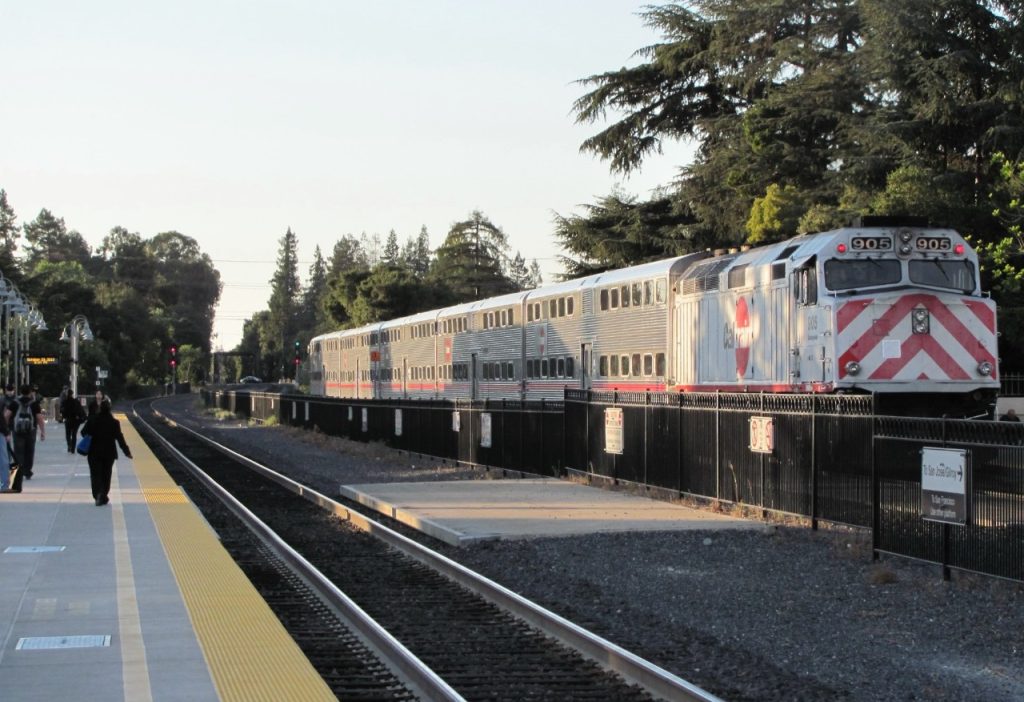
Bay Area transit agencies are struggling to agree on a regional tax proposal for the 2026 ballot and risk missing out on a new revenue source.
A new tax would be crucial additional funding for transit agencies facing deficits. The Metropolitan Transportation Commission (MTC) is the Bay Area government organization that would develop tax proposals to submit to the state legislature. But in a December 2024 final report, an MTC special committee failed to reach an agreement for the 2026 ballot that would satisfy the Bay Area’s 27 transit agencies and nine county governments.
Kaleo Mark, a policy analyst at the transit advocacy organization Seamless Bay Area, described 2026 as “a make or break moment” for public transportation. 2026 will be the last chance for a new measure to appear on the ballot before agencies must make cuts.
The 2026 elections coincide with when most transit agencies will be in a budget deficit. If a new tax, which would be a crucial source of non-revenue funding, does not appear on the ballot, the resulting transit cuts would affect all Bay Area residents, even those who drive to work.
Transit service cuts could worsen traffic both near campus and throughout the Bay Area. To encourage car-free commuting, Stanford provides free unlimited Caltrain rides to all faculty and staff who do not reside on campus and operates free Marguerite shuttles for all campus visitors. Michael Kahan, a professor of urban studies at Stanford, said that the university does not provide public transportation subsidies “out of the goodness of its heart” but out of an agreement with Santa Clara County to minimize the campus’s impact on local traffic.
“Our public transit is one of the things preventing our region from getting more unaffordable,” said Sebastian Petty, senior transportation policy advisor at urban planning organization SPUR (San Francisco Bay Area Planning and Urban Research Association). He noted that Californians’ second largest expense after housing is transportation.
Transit cuts would raise the cost of living by forcing people who don’t drive to purchase a car or pay for parking charges. San Francisco is one of the most expensive cities to live in the United States, but many people can live and work there without owning a car.
Transit cuts could also worsen the region’s housing crisis. Without reliable public transportation, demand would increase for housing closest to where people work, further raising rent.
Kahan said that Bay Area transit agencies like Muni, BART, and Caltrain face particular financial challenges because the systems are designed to transport people from suburban homes to downtown offices. However, remote work has persisted in the Bay Area, and downtown San Francisco has had one of the slowest recoveries since the pandemic.
The MTC Transportation Revenue Measure Select Committee met from June to October 2024 to develop tax proposals. Committee members represented each of the Bay Area’s 9 counties, two state senators from the region, and transit policy organizations including SPUR and Seamless Bay Area.
Members ranked seven features of the potential tax measure from one to five. Questions about the features included if all nine counties should have to adopt the tax or whether the tax should be a sales or payroll tax. The committee’s final report noted that no feature achieved a majority of ones and twos.
In a summary sheet submitted to the state legislature, MTC Executive Commissioner Andrew Fremier reported that “The Select Committee didn’t reach consensus on a specific funding framework.” Petty said that the committee’s work was less about defining a specific proposal than determining whether a measure is “within the realm of possibility.”
For a tax measure to reach voters’ ballots in 2026, Mark explained that the MTC, then the state legislature must first agree upon a proposal.
According to Mark, of the Bay Area’s 27 transit agencies, Muni, BART, and Caltrain are facing the three “steepest fiscal cliffs,” with BART facing a $400 million deficit. Over 70% of BART and Caltrain’s revenue come from fares but ridership is at 40% of pre-pandemic levels.
Petty, who worked as a Caltrain planner before joining SPUR, pointed to Measure RR as an example of ballot measures effectively raising money. In 2016, voters in Santa Clara, San Mateo, and San Francisco counties approved a one-eighth of a percent sales tax to raise $100 million annually for Caltrain over 30 years. Petty said that Measure RR, along with federal relief money, helped keep Caltrain afloat through the pandemic, but the funding is not enough, as it was never intended to be used for a crisis like Covid-19.
The MTC committee’s “Core Transit Framework” hopes to raise $540 million annually for 30 years in four Bay Area counties: Alameda, Contra Costa, San Francisco, and San Mateo. If all nine Bay Area counties–Marin, Napa, Santa Clara, Solano, and Sonoma–opted in, the tax would raise $1 billion annually. The committee report further stated that in the first nine years of the measure, 90% of the funding would go to AC Transit, Caltrain, and Muni.

